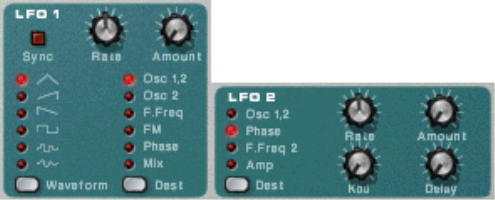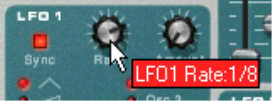|
| Waveform
|
|
LFO 2 is polyphonic. This means that for every note you play, an independent LFO cycle is generated, whereas LFO 1 always modulates the destination parameter using the same “cycle”. This can be used to produce subtle cross-modulation effects, with several LFO cycles that “beat” against each other. This also enables LFO 2 to produce modulation rates that vary across the keyboard (see the “Keyboard Tracking” parameter below).
|
|

